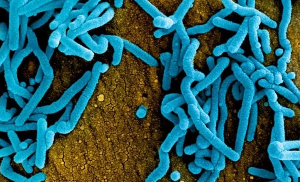– UN Agencies report
Monday, May 12, 2014/Accra - The Maternal Mortality Rate (MMR) in Ghana has declined by 49 percent between 1990 and 2013. That is according to a new report on “Trends in maternal mortality: 1990 to 2013” released on May 6, 2014 by the Maternal Mortality Estimation Inter-Agency Group (MMEIG) of the United Nations. The report is an analyses by the United Nations agencies, led by The Maternal Mortality Estimation Inter-Agency Group (MMEIG), which comprises of the World Health Organization (WHO), the United Nations Children’s Fund (UNICEF), the United Nations Population Fund (UNFPA), the United Nations Population Division (UNPD) and The World Bank, together with a team at the National University of Singapore and University of California at Berkeley.
It indicated that while Ghana’s MMR has reduced from 760 in 1990 to 380 in 2013, there remains a substantial amount of effort to reach the Millennium Development Goal 5 target of 185 deaths per 100,000 live births. MMR is the number of maternal deaths during a given time period per 100,000 live births during the same time period. The report further estimates that 3,100 women died from pregnancy related complications in Ghana between January and December 2013. Despite the high maternal deaths recorded, Ghana is considered as one of the countries in Sub-Saharan Africa ‘making progress’ towards the MDG 5 target.
Globally, maternal mortality has reduced by 45% between 1990 and 2013. In 2013 an estimated 289,000 women died due to complications in pregnancy and childbirth; down from 523,000 in 1990. Equatorial Guinea, Cape Verde, Eritrea and Rwanda are the four African countries described as ‘on track’ to meeting MDG 5.
The report, seventh in the series, said Sub-Saharan Africa is still the riskiest region in the world for dying of complications in pregnancy and childbirth. The region has the highest MMR (510), accounting for 62% (179,000) of global maternal deaths.
These latest estimates, according to the report, were made based on an improved methodology and data, gathered from country consultations and compared to previous estimates. A high point in the report is that, globally, there were common areas where countries made progress towards improving maternal survival. Successful strategies and policies related to safer motherhood, neonatal health, nutrition and gender are anchored in the principles of human rights. It found that there was a marked improvement in use of evidence and innovation to improve maternal survival. The Maternal Health Advisor of the MamaYe Campaign in Ghana, Dr. Sylvia Deganus expressed delight that the rate of Skilled Attendant at Birth (SAB) to delivery cases has gone up from 60.3 percent in 2010 to 63.1 percent.
“This is very important because it the work Civil Society Organisations and health officials have done over the years is paying off. Antenatal counseling sessions have been really helpful in increasing the number of pregnant women attended to by SABs.”
She said the release of the report was timely because it came at a time when the world was celebrating the contribution of midwives to the survival of pregnant women and motherhood. “There is no gainsaying the fact that training many more SABs and building the necessary health facilities will go a long way to put Ghana’s progress on track.”
She urged Civil Society Organisations to press on in demanding better quality of service from health officials and efficient allocation of funds Government to improve maternal and newborn health in Ghana. Notes to editor
About MamaYe MamaYe is a campaign initiated by Evidence for Action (E4A), a multi-year programme which aims to improve maternal and newborn survival in sub-Saharan Africa. Funded by the UK Department for International Development, the campaign focuses on using a strategic combination of evidence, advocacy and accountability to save lives in Ghana, Malawi, Nigeria, Ethiopia, Sierra Leone and Tanzania.
Click here to download the full report.
General News of Tuesday, 13 May 2014
Source: Derick Romeo Adogla
















